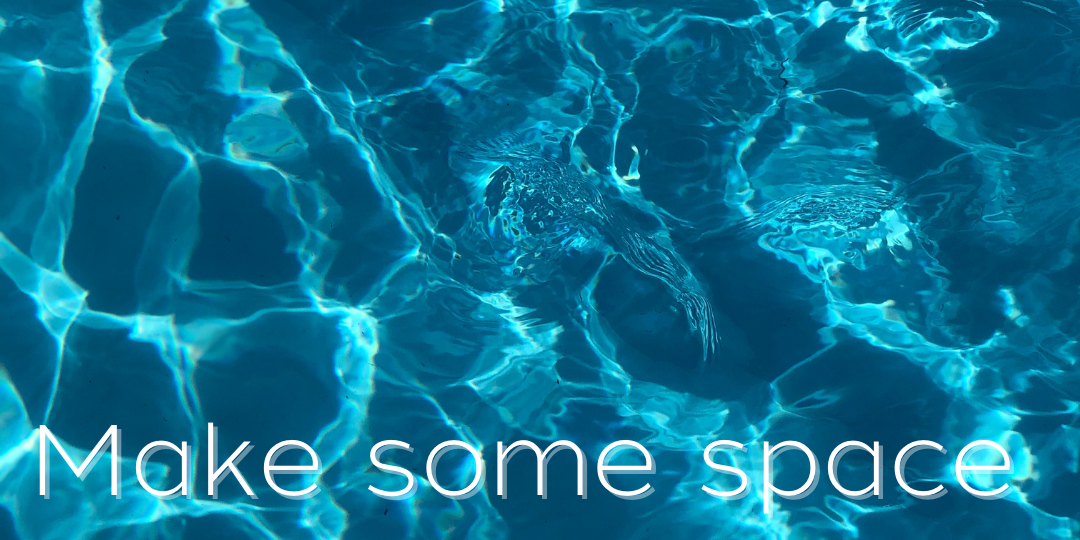How to Free Up Some Brain Space
Do you ever feel like it’s all too much? Every Thursday, I share one action, habit, or project you may want to undertake in order to improve your health, happiness, and sense of well-being.
PROJECT OF THE WEEK
How to Free Up Some Brain Space
Our brains are amazing! They control our thoughts, memory, emotions, motor skills, breath, and every process that regulates our body.
As an efficiency expert, I am always looking for methods to improve how I live my life. Taking care of and making the most of my brain is key to living a full and meaningful life.
"Your mind is for having ideas, not holding them.®" - David Allen
David Allen is a productivity expert who created a method called Getting Things Done®. This personal productivity method has the possibility to redefine how you approach your life and work. However, it can be overwhelming to implement.
As with most methods and systems, even if you find there are parts that may not work for you or feel like the system as a whole is too complicated, you can always choose to implement only the parts that feel right.
This is true for the Getting Things Done® method.
One of my favorite parts to this method is the concept of having one place to store all the to-do items, ideas, and dreams that are floating around in your head.
Getting Started
The first step is to decide where you are going to store all these thoughts.
I would recommend choosing a system that is available on all devices that you use, so that the information can be referenced, added, and updated anywhere, anytime.
While it is usually most efficient to make updates on your computer, if an idea pops into your head at the beach or while on a walk, you should be able to add it to your system at the time the thought occurs, as opposed to continuing to store the thought in your head.
Below are a few common list-making apps:
Trello - This is what I use!
Evernote
Microsoft To Do
Google Tasks
Todoist
Things
OmniFocus
TickTick
Habitica
After you have decided where you are going to store all of the to-do items, ideas, and dreams that are floating around in your head, it's time to capture them all.
I would recommend creating a physical inbox to place all of your thoughts. This can be as simple as a basket or box (no lid) that you have lying around.
When implementing this, it is best to first gather all your "thoughts" and then capture them in your system.
Gathering your to-do items, ideas, and dreams:
Add a stack of printer paper to a clipboard and get a pen.
Go through each room in your house and write down all the to-do items you see.
Each item should be on a separate piece of paper.
If you find a list of to-do's that you already created, you can just add that to your "inbox".
When you get to your "office" space, it's important to go through all your files.
You want to separate out reference files from files that have items that need or may need action.
Make sure your reference files are clearly labeled and that all info in the files is truly a reference item.
Pull out all files that have items that need action or may need action and put them in your inbox.
Recycle or shred any papers you no longer need.
Next, you need to go through your electronic spaces.
Review your emails and print out all emails that need action or may need action.
Review your text messages and write down all texts that need or may need action. Each item should be on a separate piece of paper.
Review any other electronic spaces where you may be holding items that need action or may need action. A few examples may be Facebook Messenger, Instagram Messages, Twitter Messages, or What's App.
Are there any other spaces that you need to review? A few possible examples may be your car, a second home, or a parent's home if you are their caretaker.
Looking at your “inbox” may feel overwhelming, but remember, these are all the items you have been storing in your head.
Is it becoming more clear now, why you feel overwhelmed or anxious at times?
Once you have gathered all the items floating around in your head, it's time to add them to the app you chose.
There are many ways to categorize the information. At the start, I would not worry about how you categorize everything. It's easy to update later, as it becomes more clear.
Below are some common categories you may want to start with:
Next Actions
Projects
On the Phone
Waiting For
Errands
Some Day
Maybe
Just in Case
Agendas
Trips
Grocery List
Target List
Amazon List
Presents to Buy
Home Ideas
Additional Resource
I highly recommend the book, "Getting Things Done" by David Allen.
The book contains a lot of information. I would recommend reading or listening to the whole book first and then deciding how you want to use his strategies to improve your life.
Happy Spaces’ Tips & Tricks
Implementing this takes time: However, the benefit of not having to store everything in your head, is profound.
You know how you work best: You may want to set aside a whole day or a whole weekend and make this happen. Or, you may want to set aside 20-minute blocks and just keep at it until you reach the finish line.
Don’t forget to schedule a Weekly Review: This is the key for your brain to trust your lists and let go.
During your “Weekly Review”, you should add to your lists all new items that have been added to your “inbox” over the past week and then review all items on your lists.
A Note from Happy Spaces
The goal is to add value to your life. If you think this project will add value:
Estimate how long you think it will take. I would recommend doubling the time you estimate.
Look at your calendar over the next week and pick a date and time to get started.
Make an appointment on your calendar for the estimated time.
If you estimate that completing this project will take longer than one hour, I recommend doing it over multiple days. This will support you in getting started!
Prior to starting this project, take a few minutes to make a step-by-step list of EVERY action you need to take to complete this project.
It's not all or nothing. You can choose to implement only the parts of this project that add value to your life.
An Accountability Partner can be a great support in following through on your goals and commitments.
We understand how challenging it can be to implement new habits and systems. For additional support please go to HappySpacesBySarah.com.
Creating a life you don't need a vacation from! ®
Sincerely,
Sarah Weingarten
Meet Sarah
Growing up as the oldest of nine siblings in Upstate New York, I learned to use organization to create sanity among the chaos. Today, I work together with individuals, families, and small businesses to create habits, systems, and spaces that support their needs, goals, and dreams. Clients often refer to our work together as "life-changing" and "better than decades of therapy". What I love most about my work is the lasting impact it has on real people's lives. Nothing makes me happier than hearing the many success stories of clients I have worked with.



